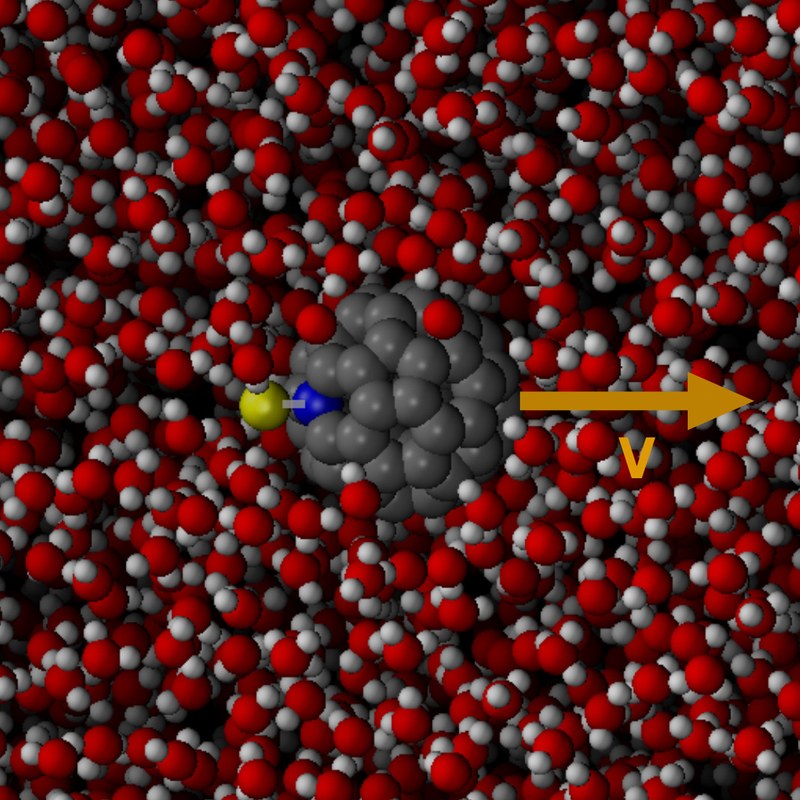Researchers design light-powered nano-swimmers
Apr 20, 2020
A team of researchers made up of professors from the UPC Physics department, from the Institute of Nanoscience and Nanotechnology, University of Barcelona, and from the University of Wisconsin-Madison, USA, have designed the theoretical prototype of a nano-swimmer that could drive directionally with light.
At the microscopic level, the self-propelling capacity of microorganisms and cells is well known. It is much more recent but the attempt to create artificial particles with this same capacity, despite the fact that its potential usefulness is very evident in applications such as medicine, reflected long ago in science fiction movies like Fantastic Voyage. The first artificial micro-swimmer is only about 15 years old, and consists of a small two micrometer long gold-platinum bar. So far a few more have been designed, the common feature being the micrometer scale and also the fact that it is difficult to control them externally, since most mechanisms are based on chemical reactions to their surface. Within the field it is considered as priority objectives to decrease its scale to nanometer, a very substantial reduction, and to have the ability to control its movement. This is where our work comes in, which takes advantage of the basic research we had previously done in energy transfer mechanisms at the molecular level, to design a light-controlled nanoscopic swimmer. It is a fulllerè C60 molecule immersed in water, the propulsion of which is achieved through the absorption of external radiation by a molecule hooked to its surface, and which thus plays the role of a propellant. The proposal is theoretical, it is, in our opinion, the first numerical nanoswimmer model in which the simulation that it does includes all the atoms of the system, in contrast to the micro-swimmers, where phenomenological models are used. Our calculation is can therefore be described as first-principles or all-atom, and we have shown that propulsion emerges without any further approximation. Since the simulation of a quarter of a million water molecules is required, the use of BSC's supercomputing resources has been very relevant.
In the accompanying image you can see a Fullerè C_60 molecule of approximately 1 nanometer in diameter (in gray) immersed in 260,000 molecules of water (red oxygen, gray hydrogen). A diatomic dipole (yellow and blue) is linked to the fullerè. By means of optical radiation, fluorescent electronic transitions are induced in the dipole. These transitions are characterized by a periodic change in the distribution of charges of the dipole, which produces rapid reorientations of the water molecules in its immediate environment due to strong electrostatic interactions. This energy transfer gives rise to inhomogeneous heating in the surroundings of the fullerè, which is accompanied by a speed of propulsion in the opposite direction to heating, a phenomenon known as auto-termofòresi, until now only observed on a micrometric scale.
More information:
Calero, Carles, Edwin L. Sibert III, and Rossend Rey. "Self-thermophoresis at the nanoscale using light induced solvation dynamics", Nanoscale (2020).

Share: